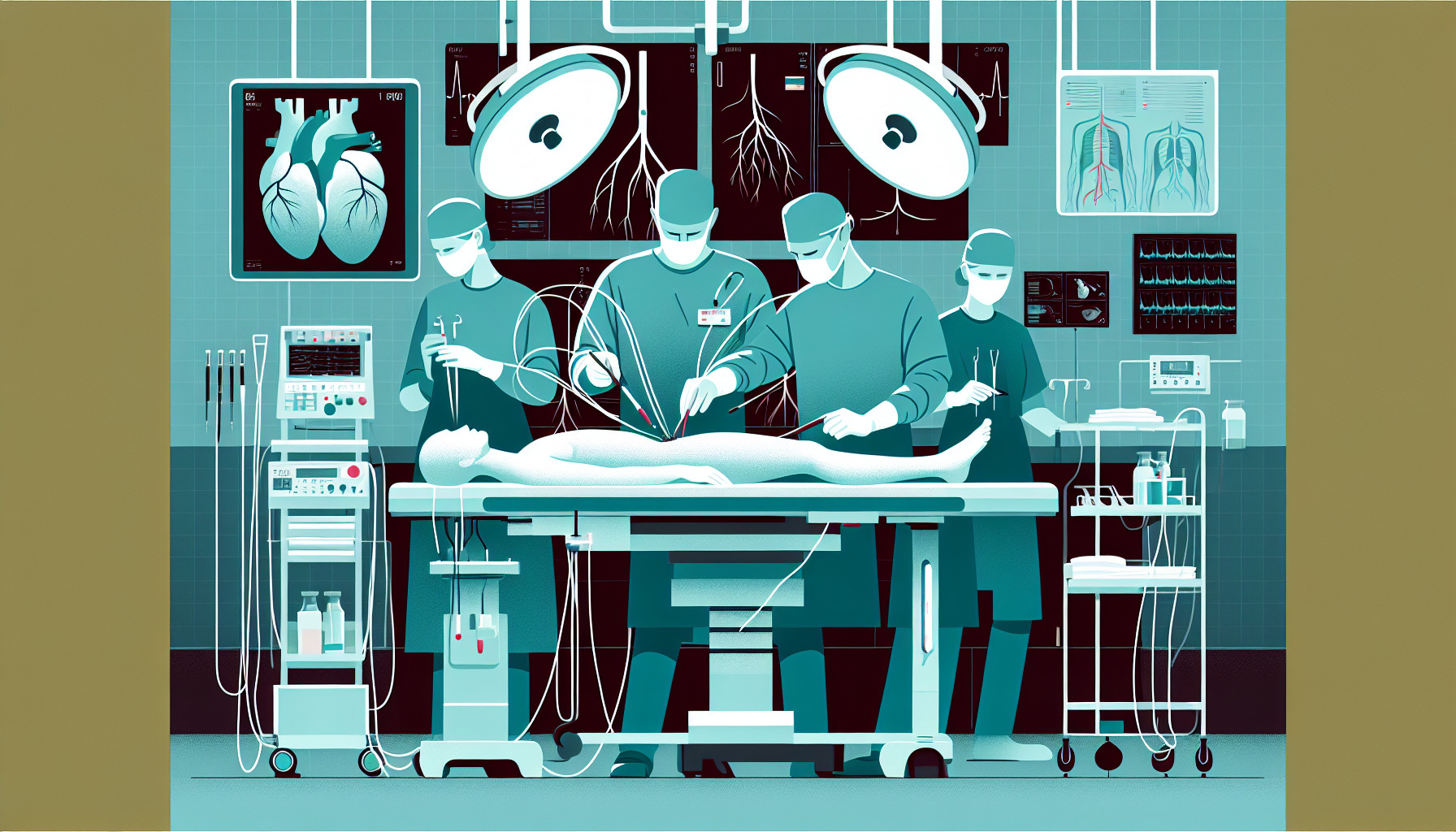Our Summary
This research paper is about a new form of ultrasound technology called ultrasound localization microscopy. This technique improves the resolution of ultrasound imaging, allowing for a more detailed view of very small blood vessels (less than 100 micrometers wide) that help distribute oxygen and nutrients throughout the body. It works by tracking the movement of tiny injected bubbles. The new technology is particularly useful for studying diseases like cancer, diabetes, and arteriosclerosis, which can significantly affect these small blood vessels. The method has successfully been used to create detailed images of the small blood vessels in the brain, kidney, skin, tumors, and lymph nodes.
FAQs
- What is ultrasound localization microscopy?
- How does ultrasound localization microscopy work and what is its purpose?
- What diseases can be studied using the new ultrasound localization microscopy technique?
Doctor’s Tip
One tip a doctor might give a patient about vascular bypass surgery is to follow all post-operative care instructions carefully, including taking prescribed medications, keeping the surgical site clean and dry, and attending follow-up appointments. It is important to monitor for any signs of infection, such as redness, swelling, or discharge at the surgical site, and to contact your doctor immediately if you notice any concerning symptoms. Additionally, maintaining a healthy lifestyle, including regular exercise and a balanced diet, can help improve the success of the surgery and reduce the risk of future vascular issues.
Suitable For
Patients who are typically recommended vascular bypass surgery are those who have severe blockages or narrowing in their blood vessels that are causing symptoms such as pain, numbness, or difficulty walking. These blockages may be due to conditions such as peripheral artery disease, diabetes, or atherosclerosis. Vascular bypass surgery is often recommended when other treatments, such as medication or lifestyle changes, have not been effective in improving blood flow to the affected area. The goal of the surgery is to create a new pathway for blood to bypass the blocked or narrowed section of the blood vessel, improving blood flow and relieving symptoms.
Timeline
Before vascular bypass surgery, a patient may experience symptoms such as pain, numbness, or weakness in the affected limb due to reduced blood flow caused by a blockage in the blood vessels.
The patient undergoes diagnostic tests such as ultrasound, CT scan, or angiography to determine the location and severity of the blockage.
Based on the findings, the doctor recommends a vascular bypass surgery to create a new pathway for blood to flow around the blockage.
During the surgery, a graft is used to create the new pathway, bypassing the blocked blood vessel.
After the surgery, the patient may experience some pain and discomfort at the incision site, which can be managed with medication.
As the blood flow improves, the patient should start to experience relief from symptoms such as pain and numbness in the affected limb.
The patient will undergo follow-up appointments and tests to monitor the success of the surgery and ensure proper healing.
In the long term, the patient should experience improved blood flow and reduced symptoms, allowing them to resume normal activities and improve their quality of life.
What to Ask Your Doctor
- How does vascular bypass surgery work and what is its purpose?
- What are the potential risks and complications associated with vascular bypass surgery?
- How long is the recovery period after vascular bypass surgery and what can I expect during this time?
- Will I need to make any lifestyle changes or take medication after the surgery?
- How successful is vascular bypass surgery in treating my specific condition?
- Are there any alternative treatment options to consider before proceeding with vascular bypass surgery?
- What is the long-term outlook for my condition following vascular bypass surgery?
- How often will I need follow-up appointments and monitoring after the surgery?
- Are there any specific precautions or limitations I should be aware of after the surgery?
- Can you provide me with more information about the ultrasound localization microscopy technology and how it will be used in my case?
Reference
Authors: Christensen-Jeffries K, Couture O, Dayton PA, Eldar YC, Hynynen K, Kiessling F, O’Reilly M, Pinton GF, Schmitz G, Tang MX, Tanter M, van Sloun RJG. Journal: Ultrasound Med Biol. 2020 Apr;46(4):865-891. doi: 10.1016/j.ultrasmedbio.2019.11.013. Epub 2020 Jan 21. PMID: 31973952
